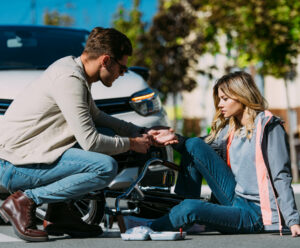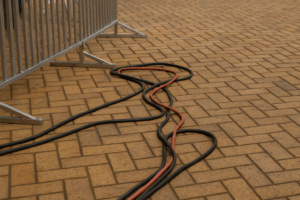
Car crashes rank as the leading cause of death for children between ages 1 and 13.
Each year, thousands of children suffer injuries in vehicle accidents, many of which could be prevented with proper car seat installation and usage. Research shows that most collisions involving children occur within just one mile of home, making every short trip a safety priority.
California maintains some of the nation’s most comprehensive child passenger safety laws. These regulations guide parents through multiple developmental stages, from newborn rear-facing requirements through the transition to adult seat belts. The state’s approach recognizes that children’s bodies develop at different rates and require specific protection at each stage.
In this article, we’ll cover California’s specific legal requirements, age-based mandates, transition timing, and practical compliance strategies.
California’s car seat requirements are based on Vehicle Code §§ 27360, 27363, 27360.5, and 27315. Together, they outline when children must use rear-facing seats, forward-facing seats, booster seats, and, eventually, adult seat belts. These laws set minimum standards, but child safety experts recommend going beyond them whenever possible.
For the youngest passengers, the law requires:
The reason is safety. Babies and toddlers have proportionally larger heads and weaker necks than adults. A rear-facing seat spreads crash forces across the back, helping protect the spine and reducing the chance of serious injury.
Once children outgrow rear-facing seats, they move into forward-facing or booster seats. The law requires:
However, even with these exceptions, a child cannot ride in a rear-facing seat in the front if the vehicle has an active passenger airbag.
Children between 8 and 16 must be properly secured in either a booster, a child safety seat, or a standard seat belt that fits correctly. This ensures older children remain protected as they transition from child restraints to adult safety systems.
Once a child turns 16, California’s general seat belt law applies. All drivers and passengers 16 and older must wear seat belts, and seat belts must be maintained in working order by vehicle owners.
Each age group has specific needs based on how children’s bodies develop. Understanding what makes each stage different helps parents choose the right protection and install it correctly:
Newborns need maximum protection because their bodies are still developing. Their heads make up 25% of their total body weight, compared to just 6% for adults. Their soft bones and weak neck muscles can’t handle the forces that occur during sudden stops.
Three main seat types handle rear-facing needs:
Installation tips for rear-facing seats:
Many parents worry about their child’s legs being cramped, but bent legs are completely safe. Children can cross their legs, sit crisscross, or let their legs hang over the sides without any increased injury risk.
Once children outgrow their rear-facing limits, forward-facing seats with internal harnesses become the next step. These seats work differently than rear-facing ones because they rely on the harness system to hold your child in place during a crash.
Harness positioning becomes critical at this stage:
Weight limits for forward-facing seats typically range from 22-65 pounds for basic models, while premium seats may go up to 90 pounds. Height limits usually max out around 49 inches, but check your specific seat’s manual.
Signs your child has outgrown their forward-facing seat:
Booster seats work completely differently than car seats with harnesses. Instead of using their own restraint system, boosters position your child so the vehicle’s seat belt fits properly across their body.
High-back boosters work best when:
Backless boosters work well when:
Proper booster positioning requires the lap belt to lie flat across the tops of your child’s thighs, not across their stomach. The shoulder belt should cross the middle of their chest and shoulder, never across their neck or behind their back.
The jump to seat belts is a big milestone, but size requirements don’t tell the whole story. Many children who meet California’s minimum requirements still get better protection from booster seats.
Physical readiness signs include:
Behavioral readiness is just as important:
Vehicle factors also affect readiness. Some cars have seat belts that don’t adjust well for shorter passengers. Others have seat cushions that are too deep or too soft to provide proper positioning. If your vehicle’s belts don’t fit your child correctly, continue using a booster even if they meet the age and height minimums.
Knowing when to move your child to the next seat type can be confusing, but here’s what you generally need to keep in mind:
While California law allows children to be turned forward-facing after age 2 if they weigh at least 40 pounds or are 40 inches tall, safety experts strongly recommend keeping a child rear-facing until they outgrow the seat’s maximum height or weight limits for superior protection of the head, neck, and spine..
Signs your child has truly outgrown rear-facing:
Cramped legs don’t mean it’s time to turn around. Children can safely ride rear-facing with bent legs. Many convertible seats now accommodate rear-facing until 40-50 pounds, letting most kids stay rear-facing until age 3-4.
Children outgrow forward-facing seats when they hit weight limits (usually 65-90 pounds) or their shoulders rise above the highest harness slots. Height alone doesn’t determine readiness unless they exceed the seat’s maximum height.
Maturity matters more than size for booster readiness. Children must understand why proper positioning matters and maintain it consistently. Kids who can’t sit still should stay in harnessed seats even if they meet size requirements.
Choose boosters based on your vehicle:
California law allows children to transition to seat belts at age 8 or once they reach 4’9″. But these minimums don’t always mean the seat belt actually fits safely. Many kids still need a booster seat well beyond those benchmarks.
The 5-step test gives a more reliable measure of readiness. A child can safely ride without a booster only if all five apply:
If any of these are missing, it’s too soon to switch. Warning signs include lap belts riding up on the stomach, shoulder belts hitting the neck, or a child constantly shifting to stay comfortable. These positions increase the risk of serious injury in a crash, making continued booster use the safer choice.
Proper installation is just as important as having the right seat. California requires secure installation, but many parents make common mistakes that reduce crash protection.
California requires secure installation using either LATCH (Lower Anchors and Tethers for Children) or seat belts. Most vehicles made after September 2002 have LATCH systems.
LATCH system basics:
Common installation mistakes that compromise safety:
The California Highway Patrol offers free car seat inspections at Area Offices statewide. Certified technicians check your installation, show you proper usage, and answer safety questions.
What to bring for CHP inspections:
CHP services are available Monday through Friday during business hours. Some locations offer extended hours or weekend appointments. Call ahead to schedule and confirm services.
Community resources also provide installation help:
Car seat recalls happen frequently, affecting millions of seats each year. Registration helps you get direct notification from manufacturers instead of hoping to see recalls in the news.
Why registration matters:
The NHTSA tracks recalls and offers email subscriptions for safety alerts. Register your seat immediately after purchase and update your information when you move.
California enforces car seat laws with significant financial penalties and DMV consequences. Parents should understand how violations are handled to avoid costly mistakes and keep children safe. Here’s what to consider:
The base fine for a first offense under Vehicle Code § 27360 is $100, but once mandatory state and local fees are added, the total cost typically reaches $475 to over $500.
Citation consequences include:
Courts sometimes offer alternatives to fines:
Parents may contest citations if they believe their child met the legal requirements or if the car seat was properly installed.
Law enforcement officers are authorized to stop vehicles if they reasonably suspect a violation of child restraint laws. Compliance is often checked during routine traffic stops or safety checkpoints.
What officers look for:
Additional enforcement notes:
California’s car seat laws cover most scenarios, but some circumstances allow for exemptions or have unique enforcement rules.
Medical exemptions are limited and require court or physician documentation. These apply when a child’s physical unfitness, medical condition, or size makes standard restraints impractical, and when no appropriate special-needs restraint is available.
Special considerations include:
Hospitals frequently perform car seat tolerance tests for premature infants before discharge, ensuring safety during travel. Parents should consult pediatricians familiar with car seat regulations when pursuing medical exemptions.
California law applies car seat requirements to most private and rideshare vehicles. Parents or guardians (not Uber or Lyft drivers) are legally responsible for ensuring children are properly secured. Some rideshare services offer car seat options for a fee, but they are not universally available.
Key points to know:
For safety and compliance, families traveling by taxi or rideshare should consider portable travel seats or compact boosters.
California car seat rules apply to all vehicles operating in the state, regardless of the driver’s residence or the vehicle’s registration. Families visiting from other states must follow California’s stricter requirements.
Even when parents follow California’s car seat and booster seat laws, accidents can still cause serious harm. Insurance companies may try to downplay injuries or shift blame if a restraint wasn’t installed perfectly, even though the crash itself caused the injuries. These cases require careful handling, since proving compliance with safety laws can directly affect compensation.
Thompson Law understands how child passenger safety laws impact car accident claims. Our team investigates every detail, from the type of restraint used to whether it was installed correctly, and we use this evidence to build a strong case for families. If your child was injured in a crash, you don’t have to go through the legal system alone.
Contact Thompson Law today for a FREE CONSULTATION. Our California car accident lawyers are here to protect your rights, handle insurers, and fight for the compensation your family needs. We cover all areas of California, Georgia, Arizona, and Texas.






Thompson Law charges NO FEE unless we obtain a settlement for your case. We’ve put over $1.9 billion in cash settlements in our clients’ pockets. Contact us today for a free, no-obligation consultation to discuss your accident, get your questions answered, and understand your legal options.
State law limits the time you have to file a claim after an injury accident, so call today.